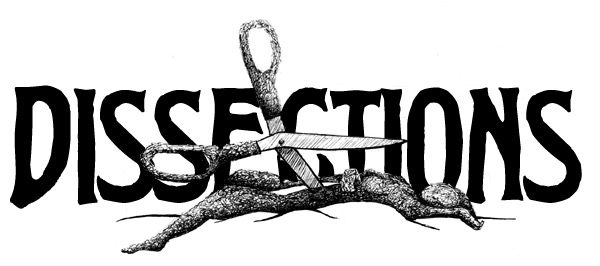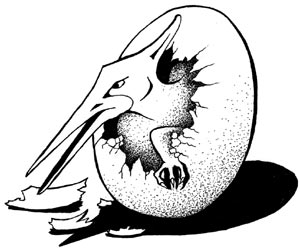[an error occurred while processing this directive]


Dark Richness and Recesses
Horror: A Literary History
(Hardback)
Edited by: Xavier Aldana Reyes
Publisher: British Library, RRP: £20.00
ISBN: 978 0 7123 5608 4
Publication Date: 25 August 2016
Review by Gina Wisker
(Cambridge and Brighton)
Xavier Aldana Reyes’ edited collection is essential for all of
us interested in the scholarly study of horror, or who just want to
find out more about its dark richness and recesses. The book begins
by recognising that the horror genre is largely defined by its affects
– fear, shock, disgust – initially found most often in short
stories and latterly in film. Horror, it argues, is a personal experience
and uses representation, metaphor. So, although Xavier does not say
so directly, at least in the introduction, its achievement is very much
like that of Gothic literature, making us process, respond, engaging
us in issues which move beyond the personal, emanate from the cultural,
from context, disturb, otherise, as Steven Jones, the great horror editor,
calls it, a ‘phobic cultural form’ (2014), and
as Xavier says, a ‘cathartic entertainment’. It is political,
historical, delves into the repressed and avoided, channelling social
fears, but it is also a lifestyle for some, and many of us enjoy the
tropes, the walk-ons of familiar figures, from werewolves to vampires
to serial killers and living dead dolls. We as readers ‘like to
harness the primeval emotion of fear and render it safe for human consumption.’
(p. 13). Although actually, I would argue, it is not always that safe,
because too safe and it would be mere puppetry. Horror constantly revives
and renews itself and so re-shocks, re-surprises and engages us.
Several years ago a couple of editions of Dissections were
mostly devoted to exploring the writing and teaching of horror, and
one contributor noted how difficult it was to teach in a class where
(because of their location) the everyday horrors of the lives of the
students were overwhelmingly worse than any imagined version. They found
it difficult to get that distance of imagination, that catalytic transfer
from the representation and the metaphor into some message alongside
some entertainment because the terrible reality was so overwhelming.
My own Continuum book (2005) Horror Fiction began by delving
into H.P. Lovecraft’s Supernatural Horror in Literature,
so I expected and was pleased to find the analysis of variations of
the genres, and exploration into primeval sources in our ancient history
(although I might have expected it to take more from Lovecraft), but
like Lovecraft’s great initial critical work on horror (and my
book!), Xavier acknowledges the locations of horror back to the Greeks,
Romans, Anglo Saxons, Renaissance revenge tragedy, and adds in the Bible
with the Book of Revelations.
What we need as readers, consumers, producers and teachers of horror
is a book such as Horror: A Literary History. It shows how
horror is a deliberate affect in the work of a range of great fictions
and films, and the differentiation of horror – less circumscribed
by particular settings, characters and situations, not so much an ‘artistic
mode’ as in the Gothic – has become more an ‘affective
marker’ (p. 15). We need the differentiation, though I think we
can take issue, as the book does, with some of it being seen as straightforward.
It is also extremely insightful and helpful to have the history of horror
and its affective nature recognised.
The book deals with horror from its sources mainly in the Gothic of
the 18th century and romantic periods 1740-1820, in Chapter 1, 'Gothic
and the Cultural sources of Horror', by Dale Townshend, through to 'Post-Millennial
Horror 2000-16', by Xavier Aldana Reyes.
Dale Townshend’s very scholarly chapter starts to effectively
recalibrate some of our favourite historical Gothic romances, recognising
that Walpole defined The Castle of Otranto as a new kind of
romance, and in 1827 the Encyclopaedia Londiniensis mentioned
‘horrible’ romances. He exposes the conflation between horror
and terror and identifies much of Gothic and horror literature’s
debt to Elizabethan and Jacobean dramas. Dale Townshend finds Walpole’s
own The Mysterious Mother (1768) as more of an origin for horror
in the Gothic romance, and as he moves on through the period he notes
that Addison gives us ‘supernumerary horrors’ and then ‘ridiculous
horrors’, while undermining the supernatural, which might well
be a popular essential. The contrasting work of the 18th century –
Gothic, and reason – are played out through the ridiculing of
horror, though that often very blinkered regimentation (this is my view
of much 18th-century representation of the sane and ordered face of
humanity) is surely itself just such an origin of horror. It is one
we have come to recognise from, for example, later on in the 19th century,
the straight-laced respectability of Dr Jekyll and his dark side, the
hideous Hyde, wallowing and rejoicing in evil. Horror is not merely
ridiculous and funny, though it can certainly be so, it also exposes
hypocrisy and deception in the most respectable artifices of culture
and behaviour. Dale Townshend gives us corporeal horror, a range of
horror in 18th-century writers, and then, the lumbering granddaddy of
them all, monstrous disgust in Mary Shelley’s Frankenstein.
Xavier Aldana Reyes’ book does not specifically focus on women
writers of horror as such, but it is filled with them at every turn.
The book opens with an introduction followed by Dale Townshend’s
chapter, and closes with Xavier Aldana Reyes’ 'Post-Millennial
Horror 2000-16'. In between it takes a chronological route which encompasses
many familiar authors and figures, including Poe, Hawthorne, Bronte,
Mary Elizabeth Braddon, Machen, Blackwood, Stoker, and Hope Hodgson,
up to Matheson, Shirley Jackson, du Maurier, Wyndham, to Stephen King,
Oates, and Bloch. Agnieszka Soltysik Monnet writes on 'American Horror:
Origins and Early Trends'; Royce Mahawatte on 'Horror in the Nineteenth
Century: Dreadful Sensations, 1820-80'; Roger Luckhurst on 'Transitions:
From Victorian Gothic to Modern Horror 1880-1932'; Bernice Murphy on
'Horror Fiction from the Decline of Universal Horror, to the Rise of
the Psycho Killer'; and Steffan Hantke on 'The Rise of Popular Horror
1971-2000'. There is recognition of the popular horror of magazines,
including Penny Dreadfuls (but less on the horror comic problems of
the 1950s), the mash ups, prequels and sequels, including Pride
and Prejudice and Zombies (Grahame-Smith, 2009), and discovery
of horror moments, for instance, in the ‘noose’ of marriage
in Eliot’s Middlemarch, and the brutality of the little
British boys in Golding’s Lord of the Flies. Most of
the examples are British, American and European, although Koji Susuki’s
Ringu, and Let the Right One In by John Ajvide Lindqvist
are also mentioned in the final chapter, and a broad span of TV, film
and graphic novels are also recognised.
Xavier Aldana Reyes’ own last chapter celebrates the flowering
of horror today, some of which replays older tales, uses zombies (a
little too often), and, like Neil Gaiman, splice in comedy and work
in a variety of genres.
Throughout there are some excellent black and white images, and the
whole is very professionally edited and a delight to read. Finally,
Xavier notes that ‘Worryingly, our zombies are not just ourselves,
but an image of what we might still become’ (p. 213). Horror:
A Literary History is the book that horror readers, as well as
students and teachers, need. It will hold you in its grip from start
to finish, leaving you replete with valuable information, some new links
and certainties, some surprising finds, and a sense of the longevity
and the mutations of this genre we have all come to love, Horror.
**************************************************************************
